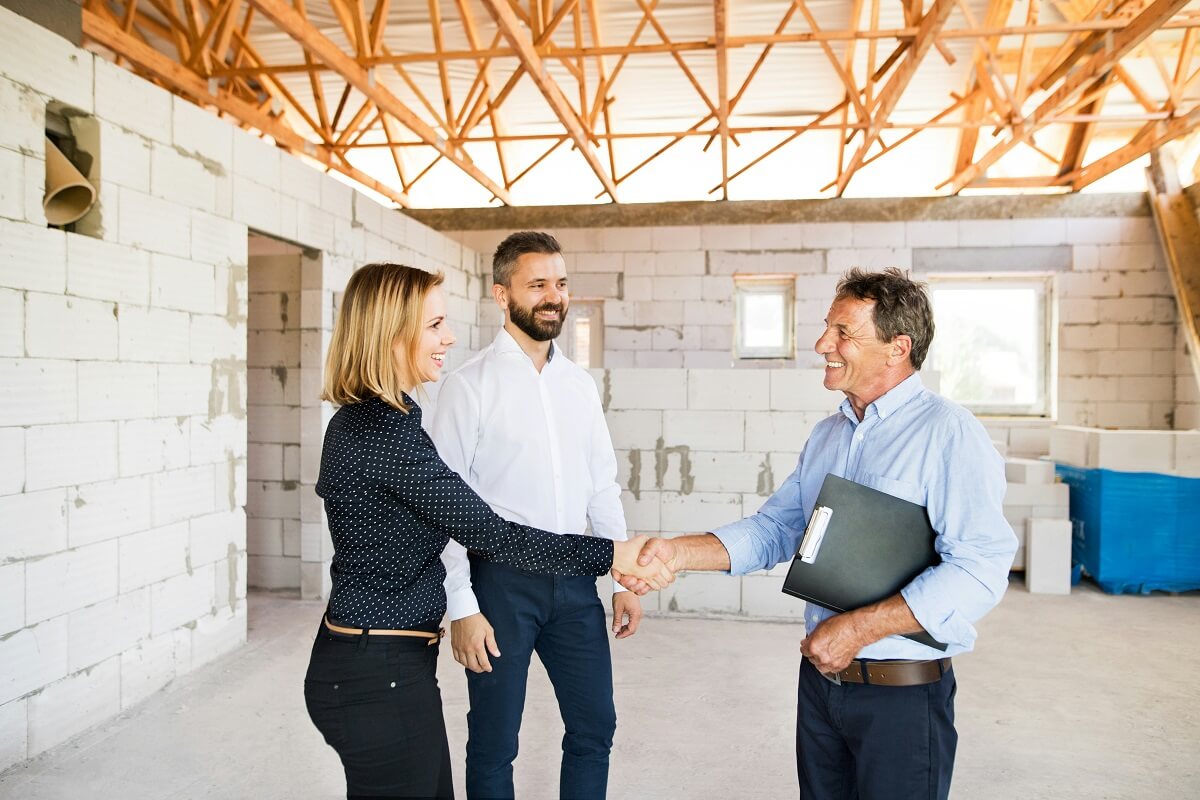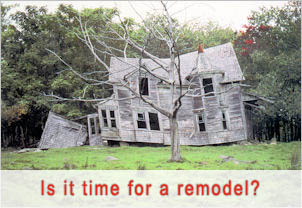
Key Takeaways
- A second story can double your living space without occupying any additional land, making it a great way to preserve gardens and outdoor spaces.
- Before you get started, check with structural engineers and your local officials to confirm that your existing home can handle a second-level addition and that you’re meeting all applicable building codes and zoning restrictions.
- Not only does a well-designed second story add value to your home and neighborhood curb appeal, but it also provides flexible space for your changing life requirements — think the new home office or guest suite.
- Brace for construction, noise, disruption every day, temporary housing, or adjusted schedules when things get really serious.
- Prioritize unified design and universal access with flexible rooms, intelligent tech, and elements that support your entire family through all stages of life.
- Focus on finish quality, energy-conscious upgrades, and curb appeal to maximize your return on investment and long-term satisfaction from your expanded square footage.
Homeowners get additional rooms above their current footprint, which is invaluable in packed cities or on tiny lots. Additional space usually translates into new bedrooms, a den or home office, or possibly a larger living room. By opting for a second story, you are utilizing your house’s height, instead of simply the footprint. It allows your family to expand and visit friends. Builders and designers design the fresh floor to complement the one beneath and maintain safety. To witness how this change operates in reality, the core examines actual layouts, construction advice, and relevant expenses for the average individual.
Is Building Up Right for You?
By going vertical and adding a second story, you can double your usable living space without encroaching on more land. This is frequently the only way to add square meters in dense/urban areas where property boundaries are set. Countless homeowners view this as an opportunity to maintain their outdoor living spaces, enhance the functionality of their house, and even increase future property value. As you’ll see, the process — although nuanced and demanding thoughtful consideration — can accommodate a variety of lifestyles and necessities.
The Footprint Advantage
Building a second story means your backyard and garden stay intact. You gain extra rooms while still having space outside for activities like playing, gardening, or relaxing. This is especially important in crowded cities or on small lots, where extra land is hard to find or expensive.
Building up may cost less than moving. You dodge agent fees and moving expenses. Instead, your budget gets used to make your present home more awesome. You sidestep the headache of selling and uprooting your life elsewhere.
Outdoor spaces are not just saved, but improved. Use your yard for BBQs, sports, or peace & quiet — don’t give it up to construction! Here’s another benefit—second stories tend to let in more sun and offer up better views, are brighter, sunnier, and more enjoyable!
That said, it’s no small job. The home’s frame could require reinforcing or reconstruction. Permits and local ordinances have to be verified. The work can go on for months, at times requiring that you relocate temporarily for your protection.
The Neighborhood Factor
Almost anywhere, a second story adds to the value of your house, particularly where space is scarce. Neighbors might enjoy increased property values as the street develops enhanced curb appeal.
City | Avg Home Price (2-story) | Avg Home Price (1-story) |
London | €1,200,000 | €950,000 |
Sydney | AU$1,400,000 | AU$1,050,000 |
Toronto | CA$1,250,000 | CA$1,000,000 |
New York | $1,800,000 | $1,350,000 |
In some cases, a second story can give your house that fresh new appearance that makes it ‘pop’ in a positive way. Not every street, however, is a match. Zoning laws can restrict height or style. Check with local offices before you begin. Additions should honor neighborhood style and privacy.
The Lifestyle Shift
Putting in a floor provides extra room for children, visitors, or even a home office. These new rooms can be utilized for a gym, media room, or private suite. For expanding families or remote workers, this helps make everyday life easier and less stressful.
An additional room allows you to separate living and sleeping spaces. Common spaces such as kitchens and living rooms feel quieter. You can configure hush hours for work, study, or sleep.
A second story provides some flexibility down the road as well. As your needs evolve—got more kids, started a business, or took care of the family—your home can evolve with you. This is what makes it great for people looking to put down roots for years.
The Realities of a Second-Story Home Expansion
A second-story addition can provide you with twice the living space without sacrificing your yard. This is a solution that can work well for a lot of homes in urban or dense suburban areas. Yet it means more than new rooms and fresh paint. Nailing it down requires good timing, technical inspections, and the right crew.
1. Structural Integrity
The initial item to verify is whether your foundation is sturdy enough. Too many homes just weren’t made to support an additional level. You might need a structural engineer to test your foundation and look at your walls. Because of this, sometimes you’ll need to supplement with steel beams or concrete footings to maintain safety. The roof has to come off, and builders have to ensure the new weight won’t crack or sag later on. If the initial design doesn’t line up, be prepared to shift floor plans or reposition walls. These measures protect the home and ensure its durability.
2. Zoning and Permits
Each city or town has its own regulations. A few locations restrict how tall you can build or what your house can look like. Permits are about more than just formalities — they protect you from fines or having to tear work down later. You have to file your plans and wait for checks from local officials. Occasionally, neighbors can weigh in if the build alters the aesthetic of the neighborhood. You might have to rework designs if they don’t adhere to the code. It’s smart to do it early so you don’t spend months behind.
3. Financial Scope
When planning for a second story, expect costs for materials, labor, and design to range from $80 to $300 per square meter. It’s smart to set aside extra money for unexpected repairs or updates needed to meet building codes. Look into ways to fund your project, such as using savings, home equity loans, or bank credit. Plus, adding a second story can boost your home’s value by 15% to 20% in the long run.
4. Daily Disruption
Most projects span months. It’s noisy, messy, and obstructs areas of your home. You may have to move if the roof blows off or utilities get turned off. Establishing clear plans with your builder can help establish a timeline and mitigate chaos. Consider how you’ll access it, where to store items, and how to keep kids or pets safe. The more you plan, the less stressful everyday life becomes.
5. Creating a Seamless Design
One huge issue is somehow making this second-story addition appear seamless. Work with your architect to match windows, rooflines, and trim. Inside — have stairs, flooring, and lighting interconnect both floors. A great design prevents the house from feeling patched together. You can fill the new space with bedrooms or workspaces. Having all private rooms upstairs allows for more privacy and tranquility, while living spaces remain on the main floor. If you redo the roof, put in insulation to protect yourself from future energy bills.

Planning Your Second Story the Right Way
Adding a second story is a huge undertaking that requires diligent consideration, intelligent planning, and the appropriate crew. Everything counts—from the initial sketch to the last swipe of paint. A solid plan ensures your new level is suited to your lifestyle and complies with local regulations.
The Vision
Begin with what you and your family need the most. Some are after additional bedrooms for a growing family, others need a quiet office or a kids’ playroom. Lock down these objectives first. Imagine how the new level can address existing space challenges and even upcoming needs, like adaptable spaces that morph as your life does. Imagine the second story being a part of your house. Color schemes, window styles, and matching materials will allow the new level to blend in, so it looks like it was always there. Collect inspiration from online galleries, home tours, or magazines. Save photos or sketches to show to your team so that they can envision your idea.
Designing the Perfect Second Story
Collaborate with an architect to design your plans. These should display the entire layout, from wall lengths and room sizes to the location of the stairs. Don’t forget to account for essentials, such as windows to provide light and favorable circulation. Set aside room for heating and cooling as well, since HVAC improvements might be necessary for coziness. Have your architect walk you through the plan, and tweak it as necessary to both building codes and your own needs. Be sure to specify everything, from beams to finishes, so there are no surprises in the field. A structural engineer needs to see whether your existing foundation can support the new load. Not all homes are ‘second-story ready’ without renovations.
The Team
Select talent for your endeavor. Search out licensed architects and contractors with stellar records. Request previous work and verify testimonials. With the right team, there are fewer surprises and things go more smoothly. Establish obvious channels for communication, such as weekly check-ins or group chats. Be transparent about timing and your expectations. Let everyone involved know the plan, timeline, and ground rules—such as zoning laws, build size limits—up front, before anyone gets started.
Designing for Life’s Changes
To add a second story is more than just acquiring a few extra square meters. It’s about designing a home that remains functional, convenient, and cozy as life changes. A two-story design allows you to transition rooms as needs expand, create spaces that are accessible for everyone, and integrate new tech with timeless quality. It’s important to consider organization, expense, and community policies before going big. A carefully designed second floor not only adds additional square footage, but it can also increase property value and preserve your yard space.
Adaptable Rooms
A flexible room can begin as a nursery, transition to a study or guest room with minimal effort. Open layouts allow you to shift walls or doors as your life shifts — so a playroom easily transforms into a quiet retreat or home office down the line. Modular furniture–foldaway beds, stackable shelves–can liberate space and allow you to exchange functions without major investments. Storage counts as well—built-in closets or under-bed drawers make it easy to keep things tidy as the function of the room evolves. Whether your family expands or needs to pivot, these rooms can pivot quickly, too, making everyone feel at home.
Accessibility
To make your home more accessible, consider adding wide doorways for easy access with wheelchairs or strollers. You can also create ramps or have zero-step entries at the main doors. If stairs are a concern, think about including space for an elevator or chair lift. Use lever-style door handles and faucets that are easier to grip. It’s a good idea to choose non-slip flooring throughout the house for safety. Having a first-floor bedroom or a full bathroom can help you age in place comfortably. Lastly, lowered counters and open space under sinks allow for seated use, enhancing accessibility.
A lot of these features can be planned from the beginning, ensuring your home remains livable for a lifetime.
Smart Technology
Intelligent lighting and climate systems reduce energy consumption and simplify daily routines. With solid design, you can wire for future tech like security cameras, voice control, or remote work gear. Energy-saving appliances, motion sensors, and automated blinds can reduce bills and make the home easier to maintain. Automation allows you to operate lights, heat, and locks from your phone, a huge benefit for safety and comfort.
What to Expect During Construction
Constructing a second story is a serious project, and you need to plan accordingly — you’ll need to follow building codes. It affects your home’s skeleton, your day-to-day living, and your future worth. Knowing what is happening during every stage will help you anticipate the transitions, interruptions, and stresses that occur.
The Tear-Off
The tear-off is the first step you see, with the removal of the old roof. This phase changes your home’s exterior in an instant, leaving it exposed to the elements and a work zone. Debris and noise are inevitable, and you may need to find temporary housing, particularly if local codes or weather render the space unsafe or uncomfortable. Safety comes first—barriers, warning signs, protective coverings, etc., to shield both workers and property. Weather can push this phase — rain or high wind can stop work, therefore it’s smart to plan for flexible schedules.
The Framing
With the roof off, crews construct the frame for the new story. This frame becomes the skeleton of your addition, employing strong materials such as engineered wood products or premium lumber. Selecting materials will be a crucial decision for your long-term safety and to meet your local building codes. So keep close tabs on the framing to make sure it tracks with the approved plans. Inspectors will come to verify that everything is structurally sound and safe, and all red flags must be addressed before proceeding.
The Integration
Integration is about tying the new level into the old. Builders strive for a smooth transition, structurally and visually. Windows and doors by style and function – matching existing features. Utilities– plumbing, electrical, and HVAC– have to be extended or upgraded to the new space, demanding expert coordination to remain up to code and avoid issues down the line. Roofing work tops everything off, with great care in sealing to avoid leaks and keep structural integrity intact. Insulation is typically blown in at this point as well, giving the whole house an energy efficiency boost.

More Than Just Extra Space
A second story not only adds square footage but has the potential to redefine the appearance, the character, and the energy efficiency of a home. The extra space alters daily rituals, creates space for new demands, and provides homeowners a moment to reimagine their home’s layout and worth.
Maximizing Value
Energy-efficient features, such as LED lighting and solar panels, do more than reduce utility bills—they appeal to buyers who value sustainability. New roofs, usually part of a second-story build, assist with insulation and could reduce heating and cooling expenses. Even basic upgrades, such as improved windows or extra wall insulation, make a significant impact on comfort and efficiency.
Marketing the new living space as a versatile space is important when selling. Emphasize the private upstairs bedrooms, guest suite possibilities, and separate living/work from home spaces. Buyers view these as opportunities to accommodate multi-generational living or generate rental income.
Maintain thorough documentation — blueprints, permits, contractor invoices, and warranties. These folders help demonstrate the craftsmanship and support a premium sale price down the road.
Enhancing Appeal
A tastefully designed second story mixes with the existing home. Coordinate rooflines, siding, and window styles with the existing structure for a unified appearance. Stay away from weird proportions or conflicting colors. The aspiration is organic, not something that appears appended.
Landscaping drapes the house to captivate the street. Spruce it up with native plants, shady trees, and easy paths. A little fresh paint and new entry doors or garage doors can tie the whole look together. Outdoor space counts—balconies or decks help the new story feel tied into the rest of the property and provide additional spaces to unwind or host.
Inside, utilize timeless colors and finishes that will never seem dated a couple of years down the road. Neutral palettes, open layouts, and built-in storage are wise selections. Stirring in some modern additions, such as energy-efficient smart lights or underfloor heating, demonstrates the house is current, but not fashionable for fashion’s sake.
Conclusion
Constructing a second story can provide you with double the amount of space you require, using the same land you already own. You gain a sleeping, working, or playing space without relocating. A second story leaves your yard open and your home exactly where you love it. You have to plan carefully, collaborate with talented builders, and consider how your life might evolve. Costs and regulations can seem hard, but the pay-off is open room for all your desires. Homeowners experience new comfort and utility in their homes after the transformation. Ready to get your project underway or have more questions? Tell us about your story or questions, and join others who have made their homes fit their lives.
Frequently Asked Questions
1. Can adding a second story double my living space?
Yes, a second story can almost double your home’s usable space. It’s a full new level, making your house vastly larger without adding to the footprint.
2. Is building up more cost-effective than building out?
If land is tight, building up can be economical. It bypasses expensive foundation work. Costs depend on your existing structure and local building codes.
3. Will I need to move out during construction?
Most homeowners have to leave for the duration for safety and comfort. Construction, particularly structural construction, can be noisy and disruptive.
4. How long does a second-story addition usually take?
Second-story additions generally require a few months. The precise timing varies based on design complexity, weather, and permit approvals.
5. What challenges should I expect with a second-story build?
Typical issues are structure, building codes, and a temporary loss of your privacy or comfort while it is being constructed.
6. Does a second story add value to my home?
A beautifully designed second story almost always adds to your property value. It increases your home’s desirability to potential buyers seeking additional square footage.
7. What professionals do I need for a second-story addition?
You will need an architect, a structural engineer, and a licensed contractor. These specialists make sure your project is secure, compliant, and serves you.
Your Dream Second Story & Primary Suite Built by Mares & Dow Construction & Skylights – Let’s Create the Extra Space You’ve Been Dreaming Of
Unlock your home’s full potential with a custom second story or primary suite addition from Mares & Dow Construction & Skylights. With over 40 years of experience, we specialize in high-quality expansions that blend seamlessly with your home’s existing structure and lifestyle needs.
Whether you’re looking to add a luxurious primary suite, expand upwards with a second story, or enhance your living space in other ways, we customize each project to suit your vision, your home’s architecture, and your long-term goals.
Key benefits of our second story & primary suite services include:
• Expanding your living space to accommodate growing families or additional functionality
• Boosting your property’s value with expert design and construction
• Creating energy-efficient, stylish living areas designed around your needs
Proudly serving Contra Costa County—including Alamo, Danville, Orinda, Martinez, and San Ramon—Mares & Dow Construction & Skylights is your trusted partner for functional, beautiful, and lasting home expansions.
Contact Mares & Dow Construction & Skylights today for a free, no-obligation quote and let’s build the second story or primary suite of your dreams!
Disclaimer
The materials available on this website are for informational and educational purposes only and are not intended to provide construction, legal, or professional advice. You should consult with a qualified general contractor or industry professional for advice concerning any specific construction project, remodeling plan, or structural concern. Do not act or refrain from acting based on any content included on this site without seeking appropriate professional guidance. The information presented on this website may not reflect the most current building codes, regulations, or industry best practices. No action should be taken in reliance on the information on this website. We disclaim all liability for actions taken or not taken based on any or all of the contents of this site to the fullest extent permitted by law.








 based on
based on 

